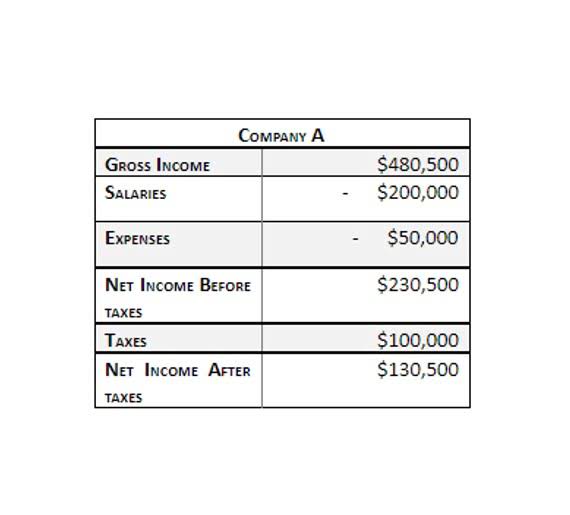
Net income or loss represents a company’s overall profitability or deficit for a reporting period. Known as the “bottom line,” it is calculated by subtracting all expenses, including COGS, operating expenses, non-operating items, and income tax, from total revenue. As we’ve mentioned earlier, the main accounts in an income statement are revenues, expenses, gains and losses. However, each of these accounts has subcategories that reflect more specific operations of a business. For example, revenue has sub-accounts such as sales revenue, service revenue, and interest revenue, among other things. Similarly, expenses account includes sub-accounts like cost of goods sold, administrative expenses, salaries and wages expense, depreciation expense, etc.
Income Statement vs Balance Sheet
There are different formats of income statements, classified based on the names of the accounts or the function and uses. The statement of comprehensive income includes all sources of revenue and expense, including investing and financing activities. Unrealized gains from investments are recorded in the statement of comprehensive income; the same applies to losses. The revenue statement shows the current financial health of a company from the income and expenses recorded. The more the revenue compared to expense and loss, the more financially healthy a company is. At the same time, this may vary depending on different regulatory obligations, the diverse needs of the business, and all other connected operating activities.
Income Statement Accounts

Learn how to build, read, and use financial statements for your business so you can make more informed decisions. This chapter presents the different accounts you may encounter in an income statement, examples for each type of business, and the formats used in Bookkeeping for Consultants preparing this report. In both income statement formats, revenues are always presented before expenses.

Business Insights
If your expenses during this time exceeded the amount of income you earned, your income statement will show a loss for the period. All revenues and gains are presented first, followed by all expenses and losses. The difference is computed and subjected to income tax to get the net income. The income statement provides financial information to the users, such as shareholders, investors, lenders, and suppliers, on how the company is doing during the accounting period.
Finally, using the drivers and assumptions prepared in the previous step, forecast future values for all the line items within the income statement. For example, bookkeeping for future gross profit, it is better to forecast COGS and revenue and subtract them from each other, rather than to forecast future gross profit directly. This statement is a great place to begin a financial model, as it requires the least amount of information from the balance sheet and cash flow statement.

How to prepare an income statement for your small business
Examples of non-operating revenue may include income from rental, revenue from patents, or income from goodwill. The income statement reflects all the incomes, expenses, profits, and losses in a company, which we put into mathematical equations to reach the net profit or loss for that accounting period. The four key elements in an income statement are revenue, gains, expenses, and losses. Primary revenue and expenses offer insights into how well the company’s core business is performing. Secondary revenue and fees, on the other hand, account for the company’s involvement and expertise in managing ad hoc, non-core activities. The primary purpose of an income statement is to convey details of profitability and business activities of the company to the stakeholders.
- By application of the Gross Profit formula, we calculate the Gross Profit as £600,000.
- For example, the income statement examples shown in the pictures in this article were sourced from WSJ.com, NASDAQ, and Marketwatch.com.
- Operating income is calculated by subtracting operating expenses from the gross profit.
- The net income on the income statement is the amount of money that remains after all taxes and expenses have been deducted from the revenue.
- The top line of the income statement represents the revenues or sales generated by the company during a particular period.
- Non-operating revenue comes from ancillary sources such as interest income from capital held in a bank or income from renting a business property.
Create a trial balance report
When deciding how you’d like to report your net income, it’s important to consider the pros and cons of both single-step and multi-step income statements. Effective business decisions are made on the back of comprehensive financial data. Similarly, creditors use income statement accounts to determine whether a company is a good credit risk. When you subtract both COGS and operating expenses from gross sales, you get the operating income. This is a crucial figure because it reflects how efficiently a company operates, regardless of financial accounts found on income statement or tax considerations.




